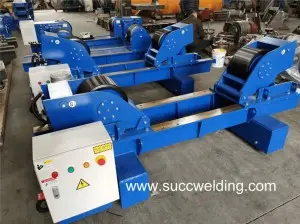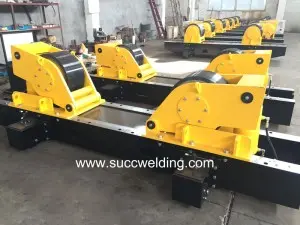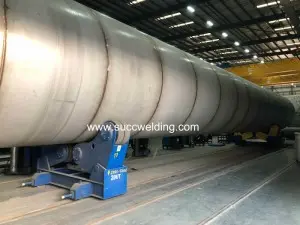First, the basic principle of rotary welding
Rotary welding is a welding method that rotates and welds the workpiece at the same time. The welding head is fixed on the axis of the workpiece, and the rotation is used to drive the welding head and the workpiece to complete the required welding task. The essence of rotary welding is to heat the workpiece to the welding temperature by friction heating, and then apply welding pressure to make it join (or weld by arc heating).
The advantage of rotary welding is that it enables automatic control and non-destructive testing during the welding process without the need for manual intervention. This can greatly improve the quality of welding, but also can greatly improve the production efficiency, suitable for large workpiece connection.
Second, the application of rotary welding
Rotary welding is mainly used in the production of aircraft, spacecraft, automobiles, petrochemicals, ships, nuclear power and other large equipment and equipment. The use of rotary welding can effectively improve the production efficiency and welding quality.
For example, in the aviation industry, some airframes and assembly parts are produced using rotary friction welding technology, which can avoid the impact on the material, but also ensure the quality and strength of the welding. In ship manufacturing, rotary friction welding can replace the traditional riveting technology, reducing material consumption, improving the strength of the connection, but also significantly shorten the production cycle and reduce production costs.
Third, the characteristics of rotary welding
Rotary welding has the following characteristics:
1. The heat generated by welding mainly comes from the friction heat of rotation, so the temperature control is accurate and will not cause excessive thermal damage to the material.
2. The welding speed is fast, generally can reach more than 200mm/min.
3. Stable welding quality, automatic operation and non-destructive testing can be achieved.
4. The required working space is small and does not require complex equipment and institutions.
5. Rotary welding is suitable for large workpieces and complex shapes, especially for the welding of super thick plates and dissimilar materials.
Iv. Conclusion
Rotary welding is a high-efficiency and high-quality welding method, its basic principle is to use the rotation of the workpiece to drive the welding head and the workpiece to complete the required welding task. It can be used in the production of large equipment and equipment, has the characteristics of fast, efficient and stable, and is an indispensable part of modern welding technology.
Related products
Post time: Sep-14-2023




